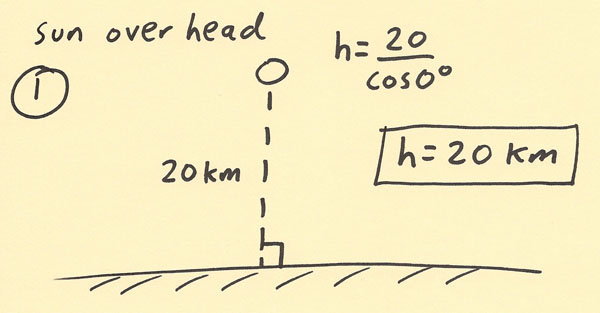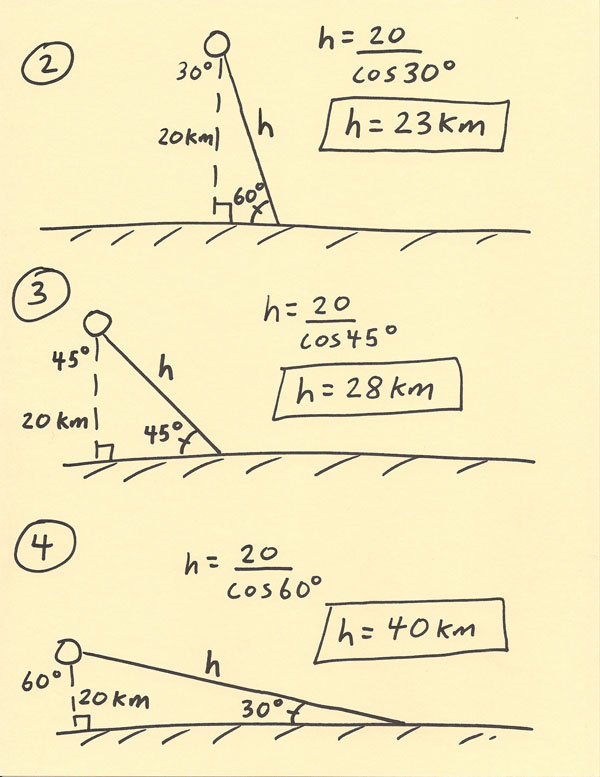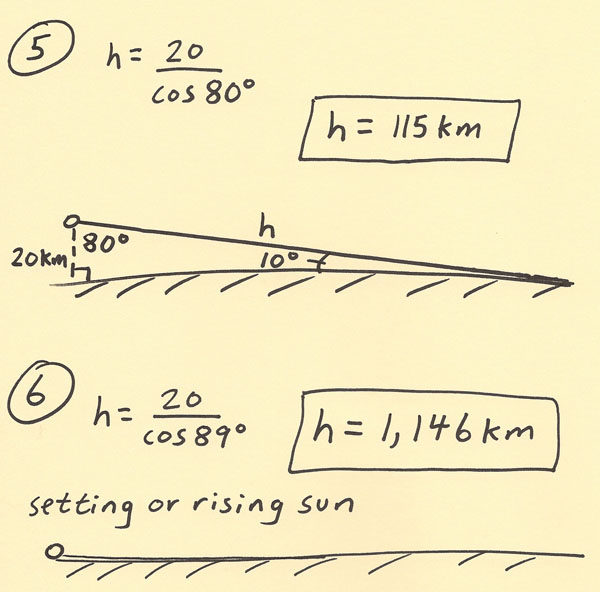
The distance that light passes through the atmosphere is a function of the sun angle. When the sun is directly overhead, then this minimizes the distance light has to travel trough the atmosphere to reach the surface. When the sun is rising or setting, then the distance that light has to travel through the atmosphere is dramatically higher. The first example below is the situation with the sun directly overhead. In this case the sun is 90 degrees above the horizon. The height of the atmosphere is equivalent to the distance light has to travel through the atmosphere to reach the surface. This situation occurs in the tropics. The sun being directly overhead means there is more direct sunlight striking the surface. This is a primary reason that tropical locations are hot. In the second example below, the sun is at a 60 degree angle above the horizon. From the trig relationship, a vertical atmosphere depth of 20 km requires sunlight to travel 23 km to reach the surface since it is moving through the atmosphere at an angle. In the third example, the sun is half way between being directly overhead and the horizon. At a 45 degree angle, sunlight must pass through 28 km of atmosphere compared to passing through 20 km of atmosphere when the sun is directly overhead. In the fourth example, the sun is 30 degrees above the horizon. At a 30 degree angle, sunlight must pass through 40 km of atmosphere compared to passing through 20 km of atmosphere when the sun is directly overhead. As the sun gets closer to the horizon, the depth of atmosphere that light has to pass through dramatically increases. In the fifth example, the sun is 10 degrees above the horizon. At a 10 degree angle, sunlight must pass through 115 km of atmosphere compared to passing through 20 km of atmosphere when the sun is directly overhead. In the sixth example, the sun is 1 degree above the horizon. At a 1 degree angle, sunlight must pass through 1,146 km of atmosphere compared to passing through 20 km of atmosphere when the sun is directly overhead. Some consequences of this relationship include: 1) High latitudes get much less direct sunlight and are thus colder. Tropical latitudes get much more direct sunlight and are thus warmer 2) Scattering of light increases as the depth that light has to pass through the atmosphere increases. Thus, when the sun is near the horizon there are colors of the sky that will be seen besides blue such as red, yellow and orange. 3) It is much easier to get a sunburn when the sun is high in the sky. The sunburn threat greatly diminishes as the sun gets close to the horizon. 4) When the sun is near the horizon, much more of the sunlight is reflected back into space. This is another reason higher latitudes are cooler and the temperature cools off when the sun gets ready to set.    |